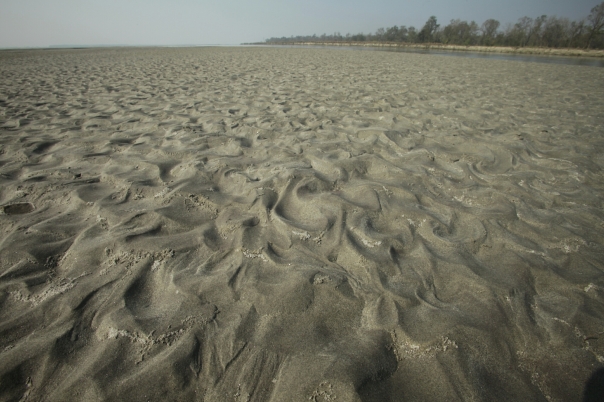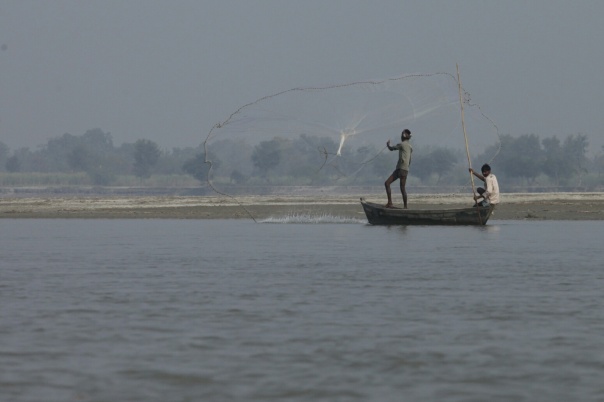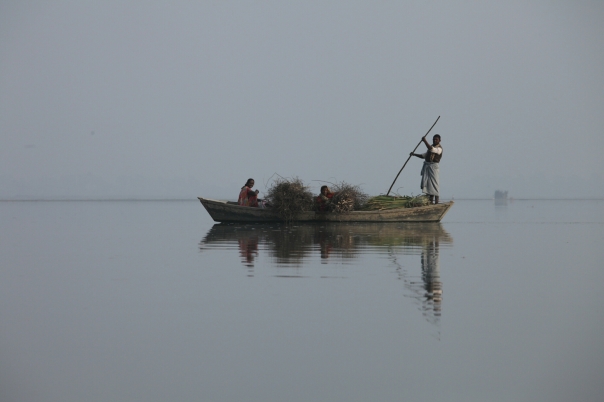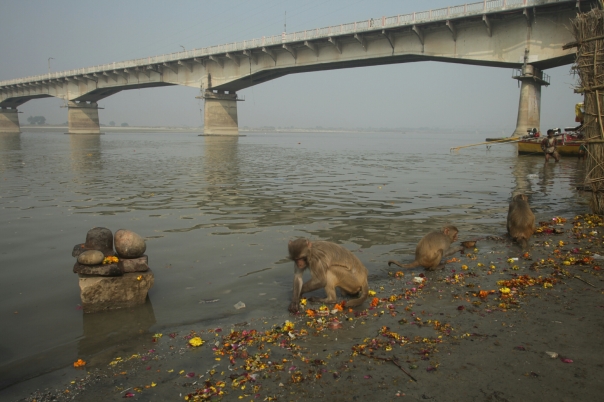A good many people live under the illusion that urban, metropolitan life somehow attenuates the influence of caste in India. 'We' are - somehow - more enlightened. It allows the so-called educated classes of this country - from conservatives to liberals to radicals - to persist in their support for policies under the exploitative framework of globalised 'development', imagining to themselves that they are somehow promoting social justice in the process - as if the big bad West is in fact a standard for fairness and justice! Villages are backward, cities are 'modern', thus free of the debilitating social baggage of caste. People have gone so far as to suggest that to Dalits "land acquisition by the state may not seem unreasonable. The NDA's new economism and hyper-industrialisation may well generate a new wave of liberal values that positively unsettle our village economy and culture"! This is the opinion of an Associate Professor at TISS, Mumbai:
http://www.thehindu.com/opinion/lead/shaking-up-our-village-culture/article7004089.ece
Even as sharp an observer as Dr. Ambedkar held on to the hope lifelong that Dalits could escape the trap of caste if they could abandon oppressive villages for cities, whose industrial dynamism and anonymity would somehow liberate them from customary subordination as they magically grew into citizens of a benign liberal state. People have even harboured the illusion that just the coming of the railways weakened the influence of caste and untouchability! (Only Gandhi was astute enough to see that railways did more harm than good - but then 'the father of the nation' has long been seen as a crank.)
What few have been willing to face is the creative subtlety with which caste operates in the Indian social landscape. It is far subtler, and better masked, for instance, than the pervasive operation of race in a culture like America's. But thoughtless votaries of rapid urbanisation, modernisation and development (and among them we may count a large number of people well within one's moral realm) easily overlook the opaque dimensions of caste in Indian metropolitan life, perhaps because (ironically) we are inadvertent beneficiaries of caste injustices.
Here is an article which actually reminds readers of the fact that caste cannot be eliminated by mere urbanisation. It has to be faced existentially in whichever context it is encountered, rural or urban:
http://www.thehindu.com/opinion/lead/urban-and-rural-continue-to-be-treated-as-contrasting-categories-in-india/article7248519.ece
Further, few have bothered to understand why caste has persisted in India, despite so many initiatives from the state to dismantle it over the past seven decades or more. Could it be because of the way the spoils system was introduced into the country after the British took full control post-1857? While caste identities are obviously much older, they were institutionalised and written into the warp and weft of the system, not just via things like census enumerations, but also, based on such suitably divisive classifications, in the way jobs were allocated, giving rise later to the 'modern' phenomenon of reservations? Isn't the most lasting legacy of Empire in India babugiri and the sarkari naukri the sinecure that confers the privilege? It wasn't always like this, was it? I wonder whether some historians and sociologists have looked at things from this angle. I have seen the work of Susan Bayly and Nicholas Dirks, and what they say about caste dynamism is certainly consistent with what one suspects.
The question also has to be raised as to why the British made such a song and a dance about caste in the 19th century. Did the injustices that stemmed from the deep hierarchies of the caste system upset them? Not really. There were injustices enough in the British class system which, in the Victorian era, had no compunctions about sending children and women to work 12 or 14 hours a day looking for coal under the earth in Yorkshire. So what bothered the British about caste in India? Could it have something to do with the fact that jaati (poorly translated into the word 'caste', whose Portugese origins few are aware of) and biradiri have traditionally been strong loci of social identity in India, constituting in most cases the very basis of communities, more or less cohesive when you contrast them with the atomised condition of consumer modernity?
The point worth considering is whether or not cohesive communities would have stood in the way of the expansion of the power of two great forces of imperial modernity: the market and the state. To consider the possible merit in this line of thinking, pause to reflect for a minute on the counterfactual of cohesive, casteless communities with a large measure of social justice. We are thinking here of face-to-face, largely self-governing (on this, see the book by John Mathai, Village Government in India, Unwin, London, 1915) communities which are meeting a very large part of their material and social needs without significant recourse to markets that connect them to the outside world. Even today, one can find some instances of places in the vast Sub-Continent where this is true, in howsoever diminished a form (some places in the inner Himalayas I have just visited - and which would exemplify James Scott's thesis about the absence of the modern state from so many peasant societies - would qualify). (Readers of the American farmer-writer Wendell Berry would recognise the content of the counterfactual I am proposing for the sake of argument.)
Now, wouldn't such a state of affairs stand in the way of the expansion of market and state power, as per the requirements of imperial modernity? And if so, wouldn't a well-oiled imperial imagination work by dividing-and-ruling when possible, and work to weaken the communities by repeatedly pointing out caste divisions and injustices that they embody?
Isn't it possible, even likely perhaps, that this is how things might have stood and appeared to imperial administrators 100-150 years ago? A hypothesis worth engaging with (for few elements of imperial rhetoric about India have been more persistent and pervasive during the last two centuries than the question of caste). This has enormous implications not merely for our understanding of caste, but as much for the way the imperial mind still continues to work, only with renewed vigour (something about which Indians are, as a rule, naive - notice for instance the complete absence of even a single good book written by an Indian scholar or historian about the Americans as a people, and contrast the fact with the ceaseless flow of books they keep writing about us!) They keep pointing to our defects in order to rule our minds better - while keeping attention suitably deflected from the great shortcomings of their own societies.
None of this is to deny the gross injustices of caste which still survive and which must be fought in every creative way imaginable. It is only to make a very reluctant Indian educated elite realise the importance of not throwing out the baby (the community) with the bathwater (of caste).
Looking at things ecologically, as one must at this late hour, one should be doubly concerned about the confidence with which the global developmental policies at work are destroying what is left of communities (and with them, agriculture and every traditional livelihood) in the Sub-Continent, one of the few parts of the world where communities, howsoever unjust, still survive. There is simply no way to protect the natural world unless communities can be made cohesive again and made in charge of resources by which they have traditionally lived (this is what I argued in my Phd thesis on Kumaon 20 years ago). The other two modes of protecting the environment - a remote bureaucracy led by a state, howsoever strong, and the corporate-run global market, howsoever 'enlightened' - are doomed to fail for reasons that would fill up at least a page in a newspaper.
Communities also need to be protected because they are the chief crucible for the practice of crafts and skills which alone - suitably upgraded and supported - can generate the enormous number of livelihoods needed in the country.
It is time to draw the rights lessons from the past. Else there is no future, except accelerated destruction...
http://www.thehindu.com/opinion/lead/shaking-up-our-village-culture/article7004089.ece
Even as sharp an observer as Dr. Ambedkar held on to the hope lifelong that Dalits could escape the trap of caste if they could abandon oppressive villages for cities, whose industrial dynamism and anonymity would somehow liberate them from customary subordination as they magically grew into citizens of a benign liberal state. People have even harboured the illusion that just the coming of the railways weakened the influence of caste and untouchability! (Only Gandhi was astute enough to see that railways did more harm than good - but then 'the father of the nation' has long been seen as a crank.)
What few have been willing to face is the creative subtlety with which caste operates in the Indian social landscape. It is far subtler, and better masked, for instance, than the pervasive operation of race in a culture like America's. But thoughtless votaries of rapid urbanisation, modernisation and development (and among them we may count a large number of people well within one's moral realm) easily overlook the opaque dimensions of caste in Indian metropolitan life, perhaps because (ironically) we are inadvertent beneficiaries of caste injustices.
Here is an article which actually reminds readers of the fact that caste cannot be eliminated by mere urbanisation. It has to be faced existentially in whichever context it is encountered, rural or urban:
http://www.thehindu.com/opinion/lead/urban-and-rural-continue-to-be-treated-as-contrasting-categories-in-india/article7248519.ece
Further, few have bothered to understand why caste has persisted in India, despite so many initiatives from the state to dismantle it over the past seven decades or more. Could it be because of the way the spoils system was introduced into the country after the British took full control post-1857? While caste identities are obviously much older, they were institutionalised and written into the warp and weft of the system, not just via things like census enumerations, but also, based on such suitably divisive classifications, in the way jobs were allocated, giving rise later to the 'modern' phenomenon of reservations? Isn't the most lasting legacy of Empire in India babugiri and the sarkari naukri the sinecure that confers the privilege? It wasn't always like this, was it? I wonder whether some historians and sociologists have looked at things from this angle. I have seen the work of Susan Bayly and Nicholas Dirks, and what they say about caste dynamism is certainly consistent with what one suspects.
The question also has to be raised as to why the British made such a song and a dance about caste in the 19th century. Did the injustices that stemmed from the deep hierarchies of the caste system upset them? Not really. There were injustices enough in the British class system which, in the Victorian era, had no compunctions about sending children and women to work 12 or 14 hours a day looking for coal under the earth in Yorkshire. So what bothered the British about caste in India? Could it have something to do with the fact that jaati (poorly translated into the word 'caste', whose Portugese origins few are aware of) and biradiri have traditionally been strong loci of social identity in India, constituting in most cases the very basis of communities, more or less cohesive when you contrast them with the atomised condition of consumer modernity?
The point worth considering is whether or not cohesive communities would have stood in the way of the expansion of the power of two great forces of imperial modernity: the market and the state. To consider the possible merit in this line of thinking, pause to reflect for a minute on the counterfactual of cohesive, casteless communities with a large measure of social justice. We are thinking here of face-to-face, largely self-governing (on this, see the book by John Mathai, Village Government in India, Unwin, London, 1915) communities which are meeting a very large part of their material and social needs without significant recourse to markets that connect them to the outside world. Even today, one can find some instances of places in the vast Sub-Continent where this is true, in howsoever diminished a form (some places in the inner Himalayas I have just visited - and which would exemplify James Scott's thesis about the absence of the modern state from so many peasant societies - would qualify). (Readers of the American farmer-writer Wendell Berry would recognise the content of the counterfactual I am proposing for the sake of argument.)
Now, wouldn't such a state of affairs stand in the way of the expansion of market and state power, as per the requirements of imperial modernity? And if so, wouldn't a well-oiled imperial imagination work by dividing-and-ruling when possible, and work to weaken the communities by repeatedly pointing out caste divisions and injustices that they embody?
Isn't it possible, even likely perhaps, that this is how things might have stood and appeared to imperial administrators 100-150 years ago? A hypothesis worth engaging with (for few elements of imperial rhetoric about India have been more persistent and pervasive during the last two centuries than the question of caste). This has enormous implications not merely for our understanding of caste, but as much for the way the imperial mind still continues to work, only with renewed vigour (something about which Indians are, as a rule, naive - notice for instance the complete absence of even a single good book written by an Indian scholar or historian about the Americans as a people, and contrast the fact with the ceaseless flow of books they keep writing about us!) They keep pointing to our defects in order to rule our minds better - while keeping attention suitably deflected from the great shortcomings of their own societies.
None of this is to deny the gross injustices of caste which still survive and which must be fought in every creative way imaginable. It is only to make a very reluctant Indian educated elite realise the importance of not throwing out the baby (the community) with the bathwater (of caste).
Looking at things ecologically, as one must at this late hour, one should be doubly concerned about the confidence with which the global developmental policies at work are destroying what is left of communities (and with them, agriculture and every traditional livelihood) in the Sub-Continent, one of the few parts of the world where communities, howsoever unjust, still survive. There is simply no way to protect the natural world unless communities can be made cohesive again and made in charge of resources by which they have traditionally lived (this is what I argued in my Phd thesis on Kumaon 20 years ago). The other two modes of protecting the environment - a remote bureaucracy led by a state, howsoever strong, and the corporate-run global market, howsoever 'enlightened' - are doomed to fail for reasons that would fill up at least a page in a newspaper.
Communities also need to be protected because they are the chief crucible for the practice of crafts and skills which alone - suitably upgraded and supported - can generate the enormous number of livelihoods needed in the country.
It is time to draw the rights lessons from the past. Else there is no future, except accelerated destruction...











